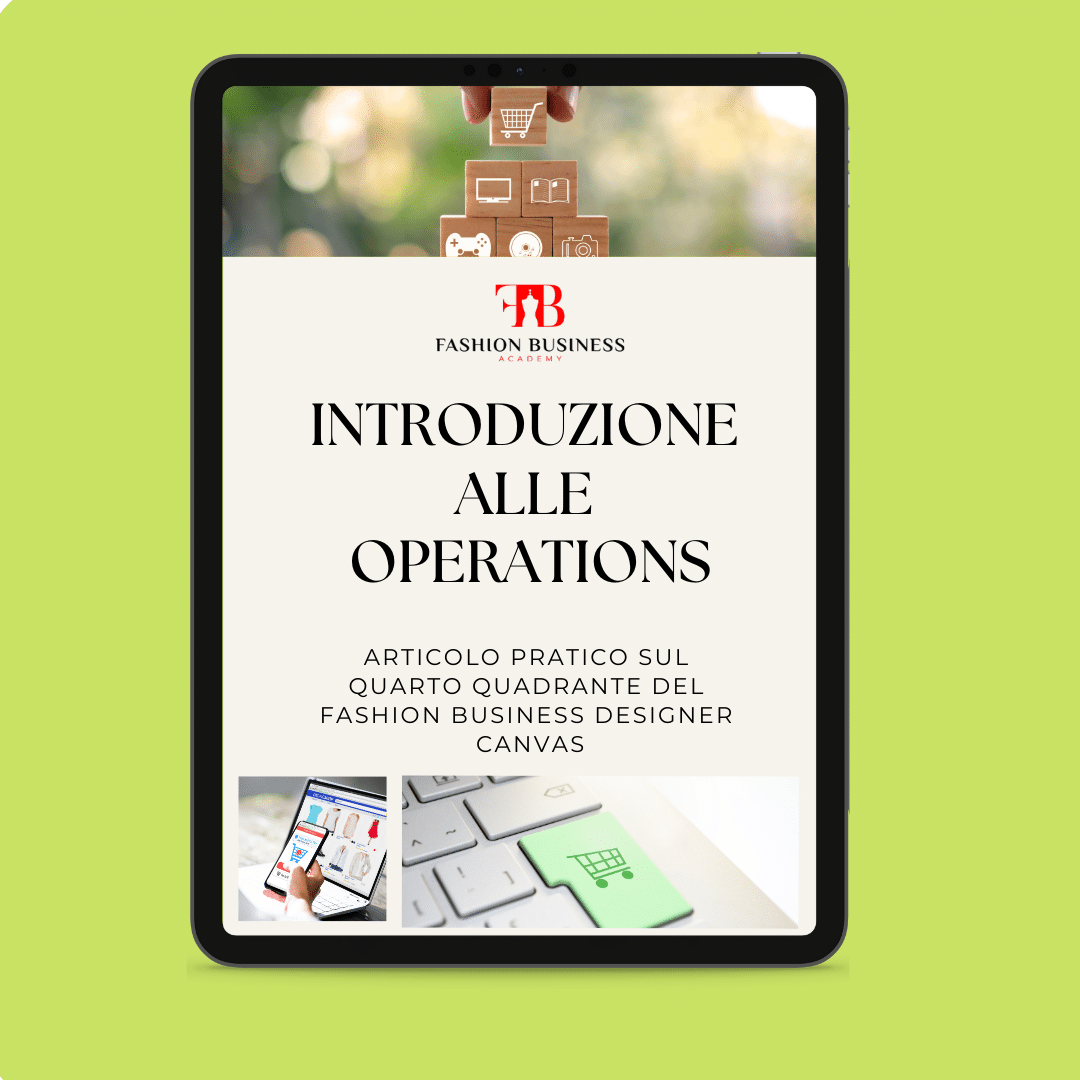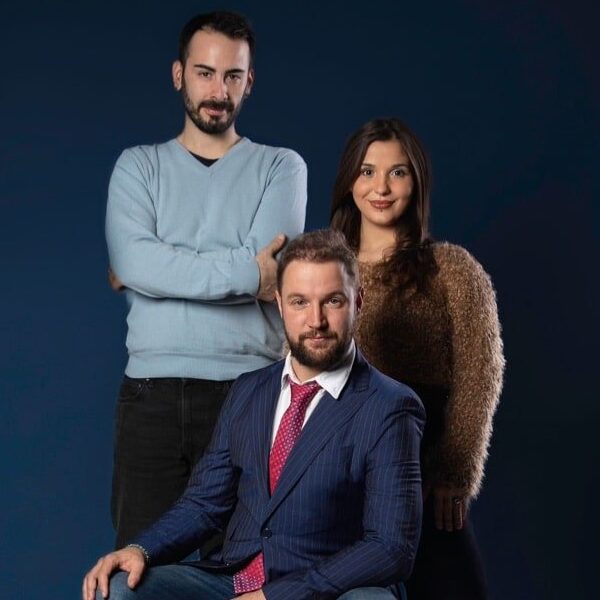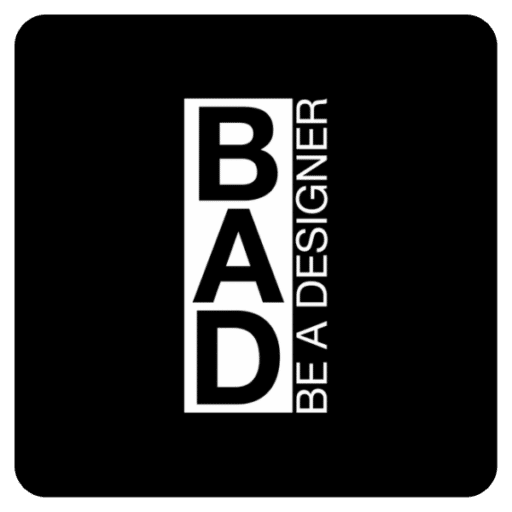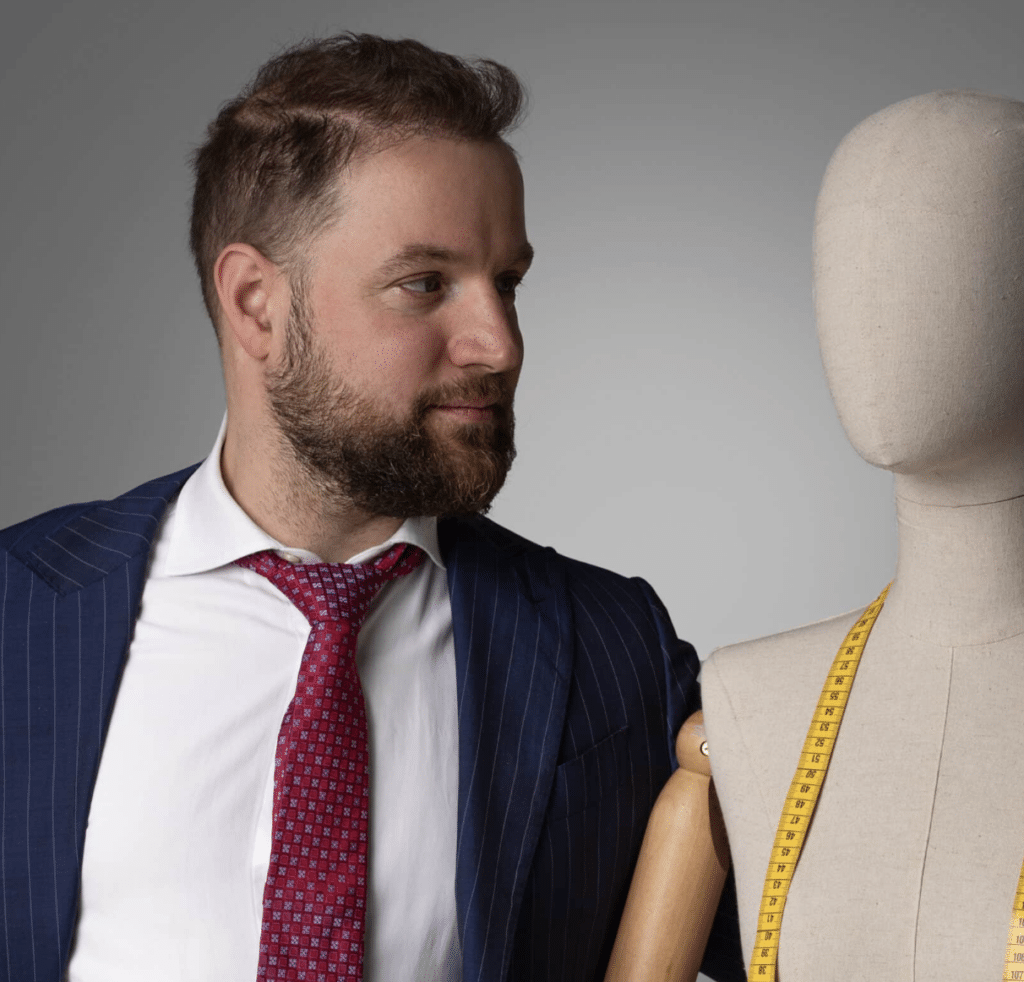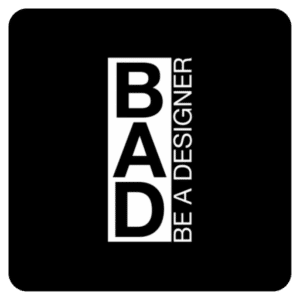Welcome to this new article from the Fashion Business Academyin which I will guide you through the fourth and final quadrant of the Fashion Business Designer, the tool I designed to help you create and manage your fashion brand in a structured and effective way. In previous articles (which you can read HERE), we explored the first three quadrants of the Canvas: how to create a collection, how to market it with marketing and distribution channels and so on!
Now it is time to tackle the final piece: the Operationsor the set of activities required to transform your brand into a truly sustainable business.
Before we begin, a brief reminder:
-
Print Canvas ? If you haven't already done so, I suggest you print it out to better follow my approach. You can find all the resources within your restricted area at Fashion Business Academywhere you will also have access to the free video course with downloadable materials.
-
Use the Support Manual ? The Canvas is designed to be used together with my book ?Do you want to be a designer too? At the end of each chapter you will find practical exercises to complete it correctly. If you have NOT purchased it yet, you can find it HEREI.
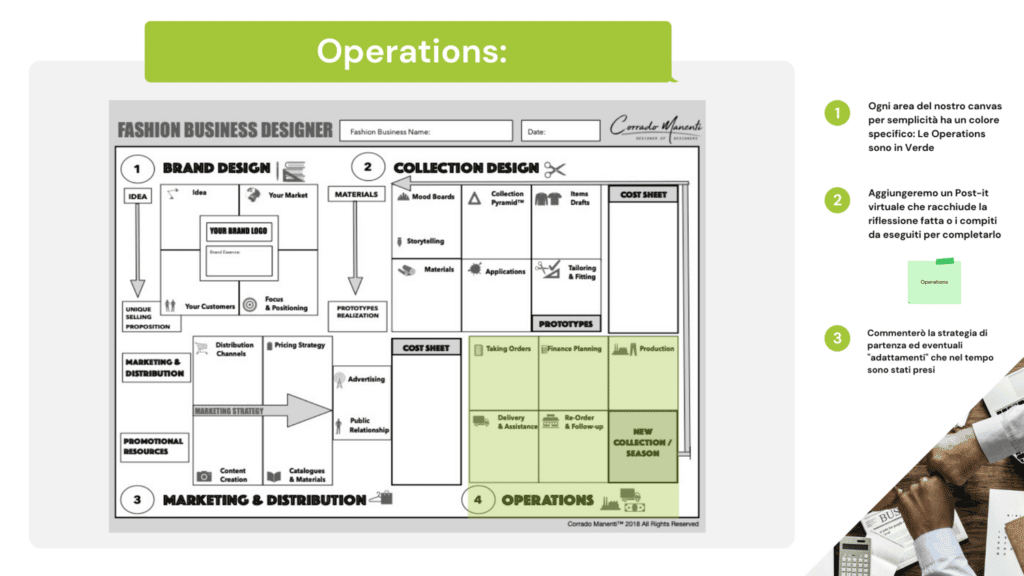
From idea to structure: the role of Operations
We have seen how crucial it is to start from a?brand idea and turn it into a concrete collection. However, the work does not stop there: to be successful, you have to get to the marketing, distribution and promotionboth online and offline.
The last step might be perceived as the least creative, but it is actually essential: building a fashion brand also means embarking on an entrepreneurial path. It is not enough to have a dream, you need to turn it into a sustainable and scalable business, capable of growing over time.
At this point, we enter the heart of Operations: everything that needs to be managed after marketing, from order management to logistics and customer retention.
Let's find out together how best to structure this crucial phase for the success of your brand.
Order Management
The first essential step is taking care of orderstwo different business models:
Model 'Ready' ? One sells garments already produced and available for the current season. This model allows for a more immediate cash flow, but requires excellent inventory management.
Programmed' model" ? It follows the traditional fashion timing, with orders collected in advance (typically six months before the season). This allows production to be planned more precisely, but often results in only partial payment in advance by retailers.
Planning finances is essential. Regardless of the initial budget, it is essential to adopt a start-up mentality (bootstrapping), i.e. optimising each resource and making sure that costs fall within a sustainable timeframe. To do this, you will have to calculate the time needed to recover the initial investment based on your sales model and the orders received.
Knowing how to schedule orders means keeping costs under control and ensuring the sustainability of your business.
Production: how much and when to produce?
One of the most critical aspects of Operations is the productionwhich is one of the main cost items. To avoid waste and better manage the budget, it is essential to produce only the necessary quantity of garments.
If you sell online, you have several options to optimise the process:
Direct sale - Produce stock in advance and sell immediately.
Pre-orders ? Collect orders before starting production, reducing financial risks.
Production on demand ? You only make the garments once you have received an order, eliminating the problem of inventories.
Strategic production management will allow you to balance costs, avoid waste and ensure a sustainable cash flow for your brand.
Logistics and shipping: don't underestimate them!
Selling a product is not enough: you must be able to deliver it efficiently and conveniently.
One of the most neglected aspects in the creation of a fashion brand is the cost of shipping, which can significantly affect the budget. Having clear agreements with couriers and knowing the shipping rates will allow you to structure a sustainable pricing model.
Rememberlogistics is an essential part of your customer service. Fast and reliable delivery increases customer satisfaction and encourages repeat purchases.
Loyalty: the importance of the second purchase
Acquiring a customer is expensive, keeping one is much less so. For this reason, the loyalty is one of the most important aspects of Operations.
A customer cannot be considered 'loyal' on the first purchase, because it might be an occasional purchase. The true value of a customer is measured when he buys from you again and again.
Strategies for customer loyalty:
Offering an excellent shopping experience
? Creating exclusive offers for regular customers
Using newsletters and remarketing strategies
Encouraging word of mouth with referral programmes
The more your brand will be able to creating a relationship with customersthe more solid it will be over time.
The Business of Fashion is a Continuous Cycle
Once orders, production, logistics and loyalty have been managed, it is time to think about the future. Fashion is a recursive businesswhich means that you must always have an eye on the next collection.
If you have managed the operational side well, you will have the peace of mind that you can plan the new season ahead of time, without hassle and without financial problems. Some brands follow traditional collection cycles, others opt for more dynamic strategies such as drop collection or seasonal capsules.
Whatever your approach, the key to success is to always be one step ahead.
Operations, the heart of your business
With the Operations, you have completed your Fashion Business Canvasand obtain a clear view of all the elements that make up a successful fashion brand.
From order management to logistics, from financial planning to customer retention, every operational aspect is crucial to turn your idea into a solid and sustainable business.
If you want to delve deeper into each stage and discover the best strategies to manage your brand, you will find all the details in my bookwhere I analyse in detail each step to build a successful fashion brand.
Did you like this article? Leave me a comment and share it on your social networks with those who might find it useful!
That's all from Corrado! See you in the next article!
